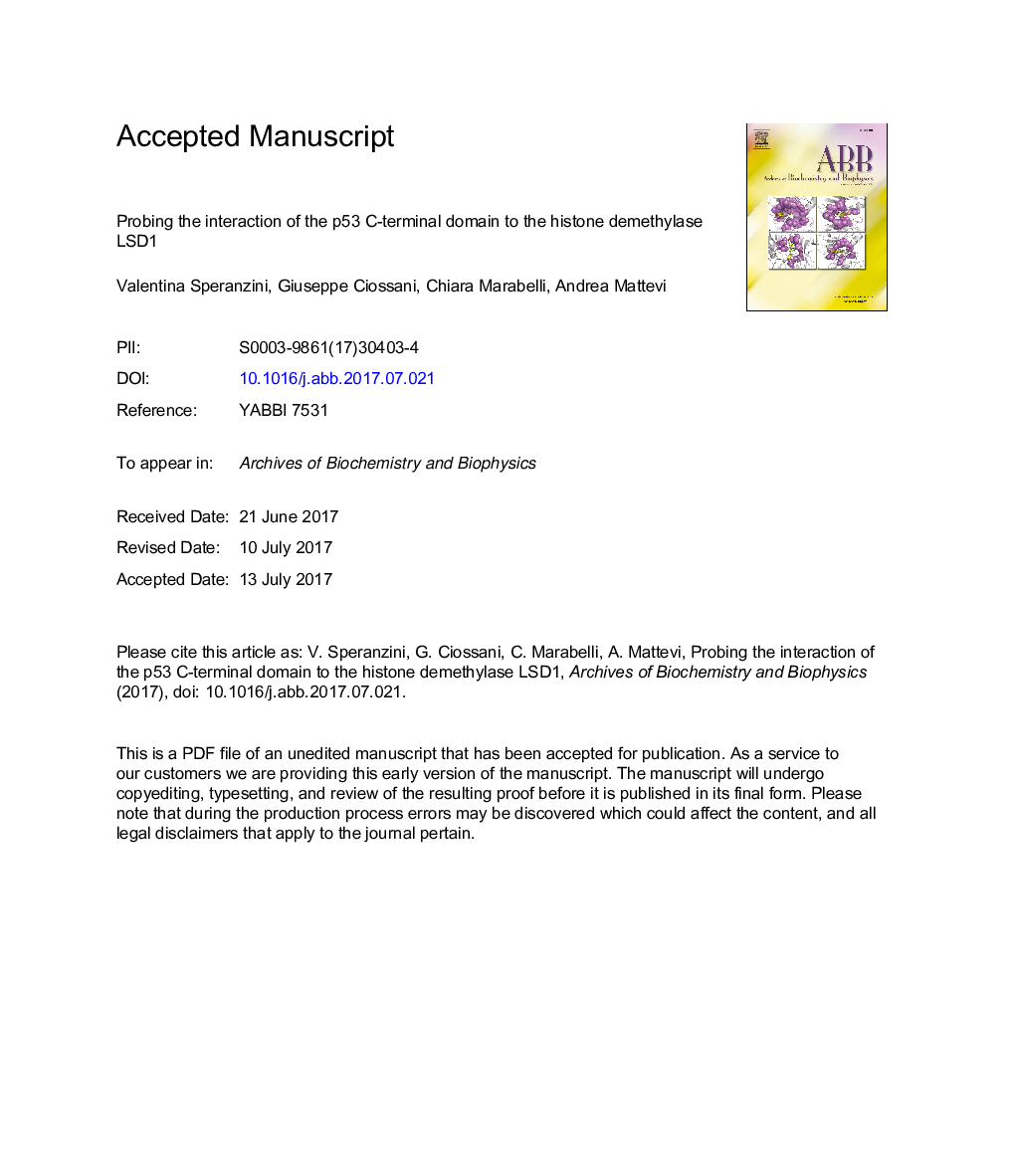| Article ID | Journal | Published Year | Pages | File Type |
|---|---|---|---|---|
| 8288994 | Archives of Biochemistry and Biophysics | 2017 | 27 Pages |
Abstract
The p53 transcription factor plays a central role in the regulation of the expression of several genes, and itself is post-translationally regulated through its different domains. Of particular relevance for p53 function is its intrinsically disordered C-terminal domain (CTD), representing a hotspot for post-translational modifications and a docking site for transcriptional regulators. For example, the histone H3 lysine demethylase 1 (LSD1) interacts with p53 via the p53-CTD for mutual regulation. To biochemically and functionally characterize this complex, we evaluated the in vitro interactions of LSD1 with several p53-CTD peptides differing in length and modifications. Binding was demonstrated through thermal shift, enzymatic and fluorescence polarization assays, but no enzymatic activity could be detected on methylated p53-CTD peptides in vitro. These experiments were performed using the wild-type enzyme and LSD1 variants that are mutated on three active-site residues. We found that LSD1 demethylase activity is inhibited by p53-CTD. We also noted that the association between the two proteins is mediated by mostly non-specific electrostatic interactions involving conserved active-site residues of LSD1 and a highly charged segment of the p53-CTD. We conclude that p53-CTD inhibits LSD1 activity and that the direct association between the two proteins can contribute to their functional cross-talk.
Keywords
Related Topics
Life Sciences
Biochemistry, Genetics and Molecular Biology
Biochemistry
Authors
Valentina Speranzini, Giuseppe Ciossani, Chiara Marabelli, Andrea Mattevi,
